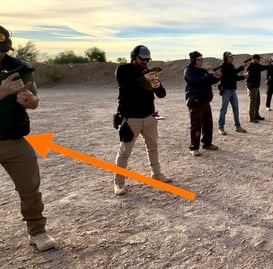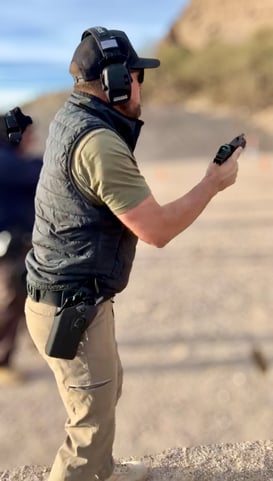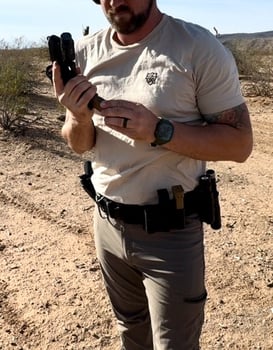The terms "empty gun reload" and "emergency gun reload" are often used in firearms training to describe specific reloading scenarios, and their exact definitions may vary slightly depending on the instructor or organization. Here’s a general explanation:
Empty Gun Reload
Situation: The firearm has been completely emptied of ammunition, and the slide or bolt is locked back.
Goal: Reload the firearm as quickly as possible to make it operational again.
Steps:
Remove the empty magazine from the firearm.
Insert a fully loaded magazine.
Release the slide or bolt to chamber a round.
Key Feature: The slide or bolt lock-back provides a visual and tactile cue that the gun is empty.
Focus: Speed and efficiency to re-engage the target.
Emergency Gun Reload
Situation: An urgent need to reload the firearm during a critical moment (often when the gun is empty, but not necessarily).
Goal: Quickly restore the firearm to a functional state to address an immediate threat.
Steps:
If the gun is empty, the process is nearly identical to an empty gun reload.
If the gun still has ammunition (e.g., a malfunction or near-empty magazine), the process may involve a "speed reload" to replace the magazine quickly without worrying about retaining the old one.
Key Feature: The urgency of the situation. The priority is getting the gun running as quickly as possible, often without regard to retaining the empty magazine.
Focus: Fast action under high stress, possibly sacrificing efficiency or retention.
Key Differences
Terminology: "Empty gun reload" focuses on the state of the firearm (completely empty), while "emergency gun reload" emphasizes the urgency and context of the reload.
Context: An emergency reload can occur under various conditions, including but not limited to an empty gun.
Retention: In an empty reload, you might choose to retain the magazine (if time allows). In an emergency reload, magazine retention is often deprioritized.
Both techniques require proficiency and practice to execute effectively under stress.
Empty Gun Reload


A speed reload of a semi-automatic pistol is a technique used to replace an empty or nearly empty magazine with a fully loaded one as quickly as possible, typically during a high-stress situation like competitive shooting or a defensive encounter.
Key Characteristics of a Speed Reload
Focus on Speed: The primary goal is to get the pistol operational again as quickly as possible. We are ALWAYS training to gain speed on our side!
Dropping the Magazine: The empty or partially empty magazine is allowed to fall to the ground rather than being retained.
Minimal Movement: The technique minimizes hand movement and time off-target.
Condition: Often used when there’s still a round in the chamber (but not always). If the slide is forward, the pistol may not yet be completely empty.
Speed Reload


A Type 1 malfunction, often referred to as a "failure to fire," is the most common malfunction experienced with a semi-automatic pistol. This occurs when you press the trigger, but the gun does not discharge. Here's an explanation of its possible causes and corrective actions:
Causes:
Faulty Ammunition: A dud round or improperly seated primer.
Improperly Seated Magazine: The magazine is not fully inserted, preventing proper feeding.
User Error: Failure to chamber a round or disengage the safety.
Mechanical Issues: Problems with the firing pin or striker.
Symptoms:
A "click" sound instead of a "bang" when pulling the trigger.
The slide is in battery (fully forward), appears normal.
Corrective Action (Tap-Rack-Bang)
This is a simple and effective immediate action (IA) drill:
As a tactically trained shooter this is where you "Step off The X" moving to your left or right before/while fixing your malfunction. Get used to moving those feet!
Tap: Firmly tap the bottom of the magazine to ensure it is seated correctly.
Rack: Pull the slide fully to the rear and release it to chamber a fresh round.
Bang: Reassess the target and attempt to fire again.
If the malfunction persists after performing this drill, a more thorough inspection of the firearm may be necessary. If you are not comfortable with it at this point and you are on a range with a Range Master, notify them of the issue and they will be able to assest you!
Note: Always observe safe firearm handling practices when diagnosing or clearing malfunctions, such as keeping the muzzle pointed in a safe direction and your finger off the trigger.

